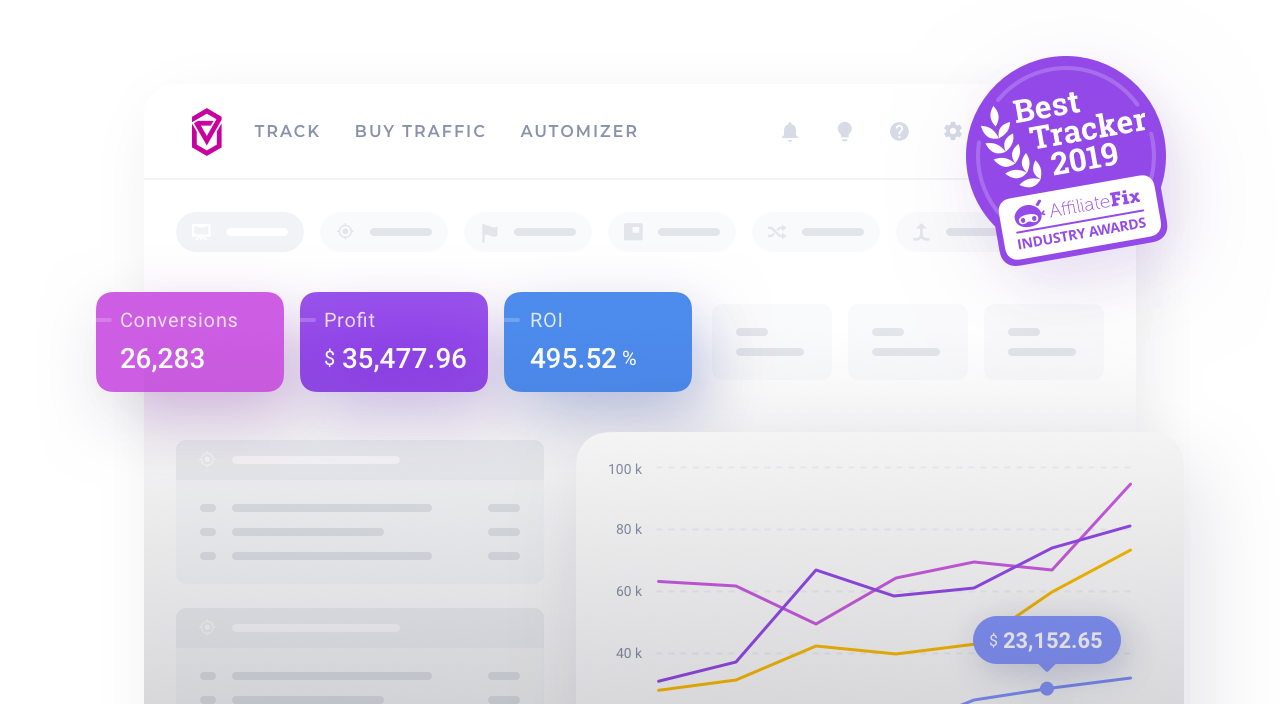Track Conversions Using a Conversion Tracking Pixel
When S2S postbacks are not supported, then the alternate solution to track conversions is to use a conversion tracking pixel.

What Is Conversion Tracking Pixel?
Tracking pixels are a cookie-based solution, so they do not rely on the click ID being passed in an offer URL. The click ID value is stored in the initial cookie logged for that visitor, so conversion tracking will still work, even if the parameter was not passed to an offer. Tracking pixels are always placed after the conversion actually takes place, for example on the so called "Thank you" page.
Voluum Note: If you want to be sure that your conversion tracking setup will always work, you should use an Offer tracking script on your offer page. Since April 2022, this script, along with the Conversion tracking pixel, has been modified to set a cookie in an offer's domain. This causes web browsers to treat such a cookie as first-party, and therefore, not block it. Read the Offer Tracking Script with First Party Cookies article to learn more.
How it works
The click ID value is assigned to a visitor on two occasions:
- When a landing page was used in the campaign funnel: After clicking the click URL under a CTA button on a landing page
- When a direct linking to an offer was used in the campaign funnel without a landing page: After clicking the campaign URL hidden under an advertisement.
This click ID value is then logged in a cookie of the visitor's web browser. If cookies are disabled on visitors web browser, then conversion tracking pixel will not work.
At the same time, the visitor is directed towards an offer via an offer URL. The click ID value does not have to be passed in the offer URL. The conversion tracking pixel has to be run after the conversion takes place, so when the visitor converts, this person will be directed towards another web page. This web page should host content relevant to the visitor that has just converted, so usually it displays a some kind of thanks to the visitor. That is why this web page is often called a "Thank you page".
The "Thank you" page will run the conversion tracking pixel. This feature comes in three forms:
- Conversion Tracking Pixel URL
- Conversion Tracking Pixel
- Conversion Tracking Script
Choosing the right form should be governed by the requirements of the "Thank you" page. However you implement it, the conversion tracking pixel will fetch the click ID value from a cookie and send a request to Voluum with information about conversion with the click ID value stored in the cid parameter. This click ID will be used to match the conversion information with information about an original visit.

Setting Up the Conversion Tracking Pixel
The following section will describe how to set up a conversion tracking using a direct method with the use of conversion tracking pixel.
Before you start, make sure that you have set up all other elements that create complete campaign funnel.
Step 1: Fetch the conversion tracking pixel.
The conversion tracking pixel is provided by Voluum. To get it, perform the following steps:
- In Voluum, click the
 icon. The Settings view will show up.
icon. The Settings view will show up. - Go to the Tracking URLs tab.
- Scroll down to the TRACKING PIXEL section and click the Copy button next to the conversion tracking form that you prefer.
Step 2: Edit the conversion tracking pixel URL.
In its simplest form, the conversion tracking pixel code should look like this: ![]() https://voluum_domain.com/conversion.gif?cid=OPTIONAL&payout=OPTIONAL&txid=OPTIONAL
https://voluum_domain.com/conversion.gif?cid=OPTIONAL&payout=OPTIONAL&txid=OPTIONAL
As it was mentioned before, the cid parameter will automatically fetch the click ID value, so there is no need to edit this parameter. However, you can edit the conversion tracking pixel URL in a way that includes additional parameters. You have two parameters to add:
- payout: you can use it to pass a static or dynamic payout value in a token.
- txid: You can use it to distinguish the following conversions. Read the Upselling: Tracking Subsequent Conversions article to learn more.
Step 3: Paste the conversion tracking pixel to the "Thank You" page.
After you edit the conversion tracking pixel, you need to paste in on the "Thank you" page.
Frequently Asked Questions
Have more questions? You might find answers below:
What is the difference between Pixel, Pixel URL and Script?
These are the three variants of Conversion tracking pixel.


